
Your comprehensive guide to everything Niagara Falls
Quick Information
Book your Niagara Falls tickets
---united-states-01.jpg?auto=format&w=1222.3999999999999&h=687.6&q=90&fit=crop&ar=16%3A9&crop=faces)
Niagara Falls is a breathtaking natural wonder and collection of three majestic waterfalls spanning the border of Ontario in Canada and New York in the United States. The largest of these is Horseshoe Falls, which straddles the international border. The American Falls and Bridal Veil Falls comprise the rest of this cluster and lie in the US. Over 12 million visitors travel to these Falls annually.
You can cross the Rainbow Bridge, an iconic steel arch bridge connecting New York and Ontario, to get close to panoramic views and the vibrant nightlife in Canada. Alternatively, you can enjoy up-close encounters and scenic trails in the US—the choice is yours. Whether you’re into chasing rainbows or enjoying boat tours, Niagara Falls promises unforgettable adventures.
Canada

Journey Behind the Falls
Take a guided tour through tunnels behind the Falls and experience the roar of the water up close.

Hornblower Niagara Cruises
Take a boat tour of the Falls and enjoy the stunning views from the water.
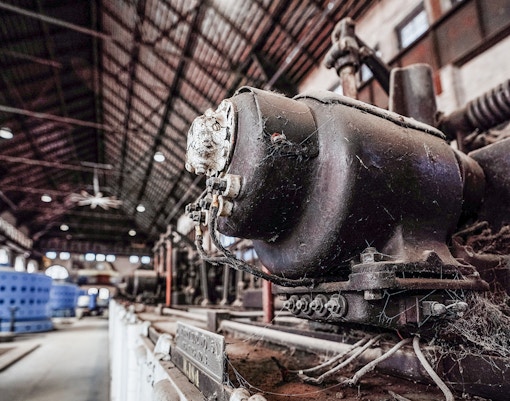
Niagara Parks Power Station
Explore the historic power station and learn about its role in the development of hydroelectricity.

Skylon Tower
Dine or simply take in the panoramic views from this towering landmark overlooking the Falls.
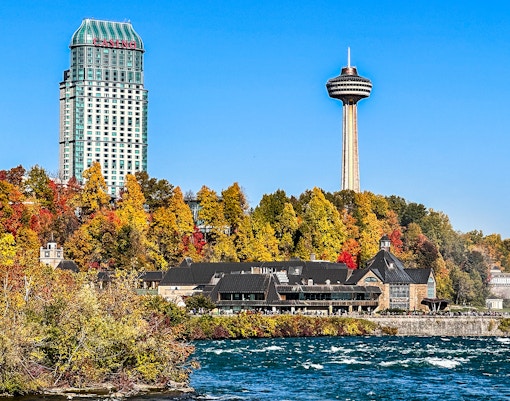
Table Rock Welcome Centre
Explore the history and geology of the Falls at this interactive center.

Clifton Hill
Enjoy a lively street packed with attractions, restaurants, and entertainment options.

Niagara Parks Botanical Gardens
Stroll through beautifully manicured gardens, including a butterfly conservatory with hundreds of butterflies from around the world.
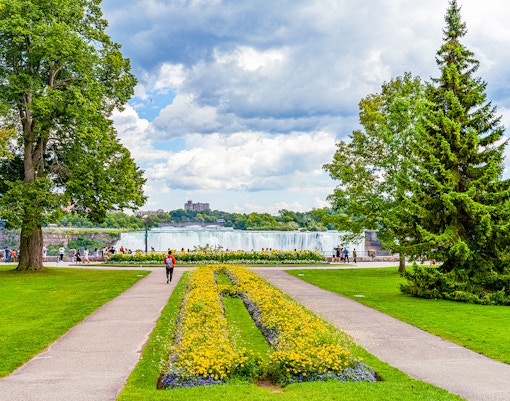
Queen Victoria Park
This beautiful park offers stunning views of the Falls and is a popular spot for picnics and relaxation.

Whirlpool Aerocar
Take a thrilling ride over the Niagara Gorge and witness the power of the Niagara River.

Floral Clock
Visit this iconic clock, built in 1950, and enjoy the beautiful gardens surrounding it.

Niagara Falls History Museum
Explore the region’s rich history at this museum, which offers free admission on Thursdays.

Dufferin Islands
Enjoy a peaceful day of picnicking and exploring these beautiful islands in the Niagara River.

Niagara Helicopters
Take a thrilling helicopter tour over the Falls and experience the breathtaking views from a new perspective.

Zipline Niagara
Feel the rush of flying over the Niagara River on this exciting zipline adventure.

Niagara Skywheel
Take a ride on this giant Ferris wheel for panoramic views of the city and the Falls.
USA

Maid of the Mist
Experience the iconic boat ride that takes you up close to the roaring Falls.

Cave of the Winds
Walk along wooden pathways right next to the Bridal Veil Falls for a thrilling adventure.

Niagara Falls State Park
Explore the oldest state park in the US, which offers scenic hiking trails, picnic areas, and stunning vistas.

Observation Tower
Get a bird’s-eye view of the Falls and surrounding area from this towering structure.

Niagara Gorge Trail
Enjoy a hike through the beautiful gorge with its rugged cliffs and flowing river.
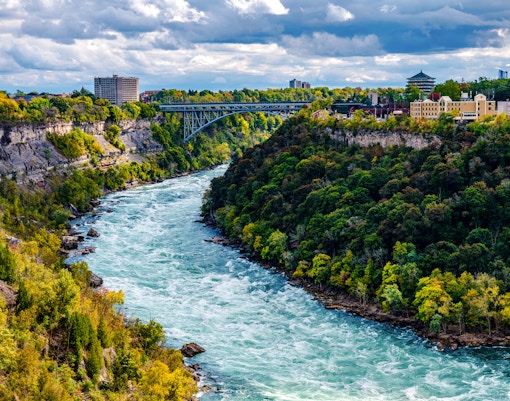
Devil’s Hole State Park
Venture out on hiking trails and take in scenic views of the Niagara Gorge at this park.

Escape Niagara
Challenge yourself with an escape room experience that will test your problem-solving skills.

Aquarium of Niagara
Get up close to the fascinating world of marine life at this popular aquarium.
Niagara River & the Great Lakes
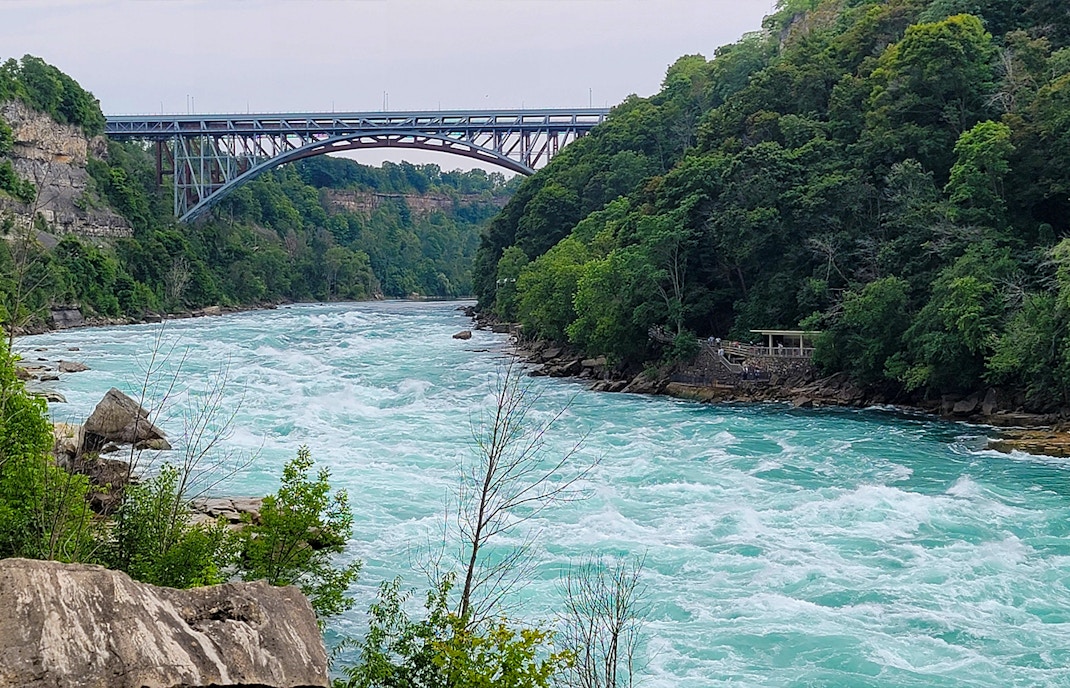
Niagara River
- Geography: The river begins at the eastern end of Lake Erie and winds toward Lake Ontario, creating a natural divide between the US and Canada.
- Niagara Falls: About halfway along its course, the river plunges over the Niagara Escarpment, forming the iconic Niagara Falls. This dramatic drop includes Horseshoe Falls, American Falls, and Bridal Veil Falls.
- Hydroelectric power: The river’s powerful flow has been used for over a century to generate hydroelectric power, providing electricity to millions of homes in both countries.
- Biodiversity: The Niagara River supports a rich ecosystem, home to numerous fish species and a critical habitat for migratory birds.

The Great Lakes connection
The Niagara River is an integral part of the Great Lakes system, including Lake Superior, Michigan, Huron, Erie, and Ontario. These lakes hold about 20% of the world’s fresh surface water.
Hydrological system: Lake Superior's water flows through Lake Michigan and Huron before reaching Lake Erie. From there, it travels down the Niagara River, over Niagara Falls, and into Lake Ontario. This water eventually makes its way to the Atlantic Ocean via the Saint Lawrence River.
Ecological importance: The Great Lakes and the Niagara River form a crucial freshwater system that supports diverse ecosystems and provides drinking water to millions.
Fun facts:
- Volume: Around 168,000 cubic meters of water flow over Niagara Falls every minute.
- Age: The Great Lakes are relatively young in terms of geology, having been formed about 12,000 years ago at the end of the last Ice Age.
- Navigation: The Welland Canal, part of the St. Lawrence Seaway, allows ships to bypass Niagara Falls, making the Great Lakes a major navigation route for shipping.
The Niagara River and the Great Lakes are more than just geographical features; they are vital lifelines that have shaped the surrounding regions' history, economy, and environment. Their interconnected waters continue to inspire awe and provide essential resources to both the US and Canada.
Frequently asked questions about Niagara Falls
The best time to visit the Falls is from late spring to early fall (May to September) when the weather is warm and all the attractions are open. Summer months offer the most vibrant experience, with longer days and numerous events.
Yes, you can. The Falls are beautifully illuminated every night, creating a spectacular display of colors. Special fireworks shows are also held on select evenings, offering a magical nighttime experience.
Yes, boat tours are a popular way to experience the Falls up close. On the US side, the Maid of the Mist offers iconic tours, while the Canadian side features Hornblower Niagara Cruises.
You can enjoy several free activities, such as walking through Niagara Falls State Park on the US side, exploring Queen Victoria Park on the Canadian side, and watching the nightly illumination of the Falls.
Swimming in the river, especially near the Falls, is extremely dangerous and strictly prohibited due to the strong currents and treacherous conditions.
Yes, the Falls host various annual events and festivals, including the Winter Festival of Lights that features stunning light displays, and summer music and food festivals.
While water flow over the Falls can reduce in winter, they do not completely freeze over. There’s been only one such incident, which was recorded in 1848.
There is no fee to view the Falls, making it accessible to everyone all year round.
The best vantage points to view the Falls include Niagara Falls State Park and the Niagara Parkway.
While some places may accept US currency, having Canadian dollars for transactions is advisable.
Prior booking is recommended for attractions, like Skylon Tower, Clifton Hill, and Niagara Parks Floral Showhouse, among others, especially during peak tourist season.



---united-states-cave-of-the-winds-01.jpg?auto=format&w=702.4499999999999&h=401.4&q=90&fit=crop&ar=7%3A4&crop=faces)